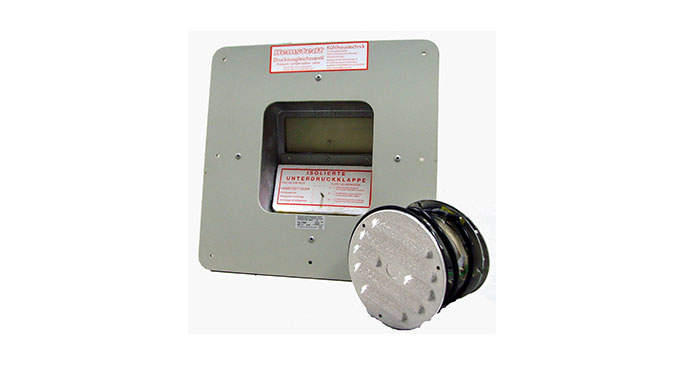
Pressure Relief Ports are designed for installation in cold room to relieve pressure on the insulated panel (wall and ceiling). Pressure on the wall and ceiling is caused by temperature change in the room. The effect of this is contraction or expansion of air in the room during temperature pull down and temperature rise during defrost. (There are other causes like opening doors, loading products, etc.)
In a sealed room without Pressure Relief Valve (PRV) the pressure difference between the inside and outside of the room during initial temperature pull down could cause the room to cave in. Much the same as a vacuum being drawn on a 20-litre fuel tin.
Prefabricated insulated panel strength varies depending on the insulation thickness, panel length, type of insulation, bonding adhesive etc. Panel strength is established by supporting each end of a panel laying flat, loading different weights onto the panel, and then measuring the deflection. The deflection will vary depending on the panel thickness and length. This method is used to determine the strength of panels and the safe working pressure for an assembled room.
When pressure in the room reduces during cooling, the higher outside pressure has been known to cause the room to implode, conversely excessive pressure on the inside of the room can cause the room to explode. In either case, excessive wall movement can lead to seal failure at panel junctions leading to damaging ice formation in the wall in low temperature rooms.
Pressure difference between the inside and outside of the room causes airflow. The rate of airflow is dependent on the speed at which the temperature difference occurs, the size of the relief valve and the pressure difference.
The function of the Pressure Relief Valve (PRV) is to allow quick equalization of internal and external pressure differences which are created each time the door is opened and when the refrigeration system defrosts. When the door is opened a quantity of warm air is trapped in the room. As this air cools, the pressure in the room reduces making the door difficult, if not impossible, to open until the pressure equalize. Pressure differences also occur during a cold room defrost cycle.
Without a Pressure Relief Valve (PRV), pressure equalization may take some time, thus causing damage to the structure of the room and the door gasket, and create unnecessary delays when entering or leaving the room.
Note;
- Moisture from warm air is taken in the cold room through Pressure Relief Valve (PRV) can cause building up ice or snowflake around Pressure Relief Valve (PRV).
- Some other factors which could influence the number of Pressure Relief Valve (PRV) to be installed are: Temperature of stock when loaded in the room, Room operating temperature, Number of door openings, Ambient humidity, Acceptable pressure on insulated panels, size of room, etc.
Pressure Relief Valve (PRV) Care and Maintenance
- Check operation of heating cable regularly, change if not working properly
- Clean Pressure Relief Valve (PRV) and nearby area weekly or when necessary to prevent dirt, ice formation, etc.
- Switch off heating cable operation when cold room not in use or room temperature is higher than 0 degree Celsius
Note;
- It is absolutely forbidden to obstruct Pressure Relief Valve (PRV).
- Do not put anything in front of Pressure Relief Valve (PRV).


